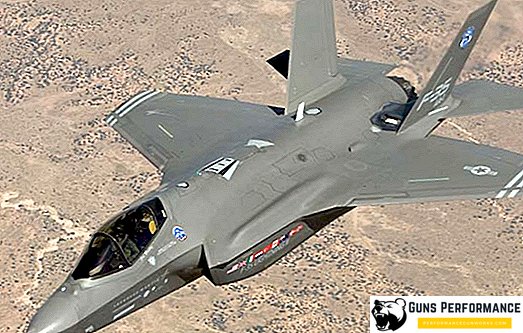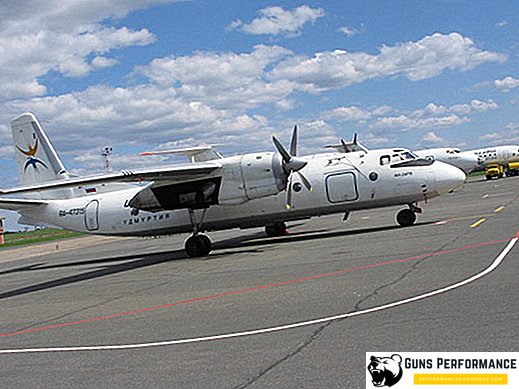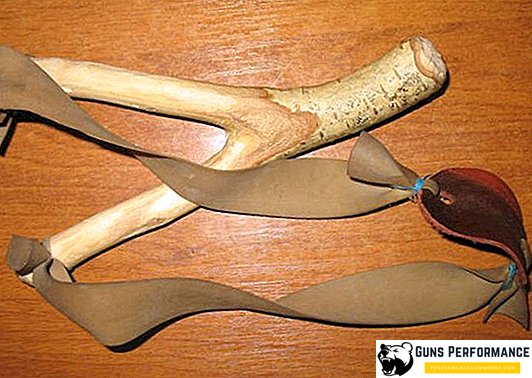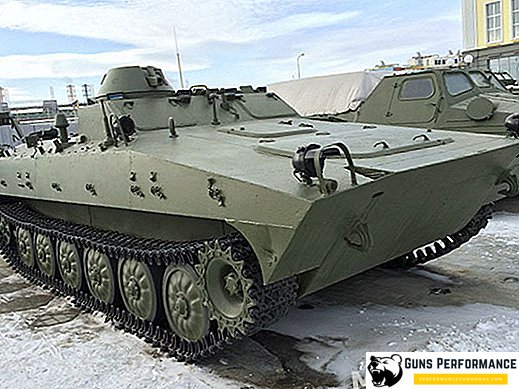
The Mi-4 is a Soviet multi-purpose piston-engined helicopter created by the designers of the Mil Design Bureau in the early 50s. This machine was the first transport helicopter adopted by the Soviet army.
Externally, the Mi-4 is very similar to the American helicopter Sikorsky S-55, adopted by the US Air Force a few years earlier. There is no doubt that during their work the Soviet designers largely copied the American machine. However, in terms of its characteristics, the Mi-4 exceeded its overseas counterpart: it had a much greater payload, and the Soviet helicopter weighed much more.
For the first time, a cargo hatch located at the rear of the helicopter was used in this vehicle.
Until the early 70s, the Mi-4 was the main transport helicopter of the Soviet army and armed forces of the Warsaw Pact member countries. Production of the Mi-4 was completed in 1966, a total of more than 3,900 units (including a Chinese licensed copy) of this machine were manufactured. In China, under the Soviet license, this helicopter was produced under the name Harbin Z-5. He is still in service with the army of North Korea.
Mi-4 was repeatedly improved and modernized, there are a large number of its modifications.
In the USSR, individual machines were operated until the end of the 80s, the decision to completely write off obsolete equipment was made only in 1988 after the crash of a helicopter of this model, which occurred in the Chita region.
The development of the Mi-4 was carried out in record time: just one year passed from the start of design work to mass production. At first, in the helicopter race of the USSR, it was in the role of a follower, therefore, very tough deadlines were set for the designers. The serial production of these machines involved the Kazan Helicopter Plant.

History of creation
For the first time, Americans began to use helicopters on the battlefield en masse during the Korean War. At first, the military were skeptical of the new machines, finding them not to be reliable enough and protected. However, it soon became clear that a helicopter was an excellent tool for reconnaissance, adjusting fire, communication and evacuation of the wounded from the battlefield.
At first, the Soviet military did not take the helicopters too seriously, however, the successful experience of their use in Korea proved that the new type of vehicles can be used very successfully in combat conditions. In the USSR, even before the war, they were engaged in the creation of rotary-winged cars, but they were autogyros. The creation of helicopters in the late 40s took up teams led by Mil and Kamov.
In 1948, the first Soviet serial Mi-1 helicopter took off into the sky. To begin its mass production required the intervention of Stalin himself.
The Mi-1 was not inferior to its foreign counterparts, but it was a light helicopter capable of carrying no more than three passengers or a small cargo. The military needed a middle class helicopter that would have a greater payload.
The Americans had such a helicopter: in 1950, the Sikorsky Aircraft company began to supply the US Army with an S-55 / H-19 Chickasaw helicopter, which could carry 12 paratroopers or 960 kg of cargo. These machines were very successfully used by the Americans during the Korean War, they showed themselves particularly well during the amphibious operation in Inchon.

The development of helicopters of greater capacity in the Mil Design Bureau began in the late 40s. However, at that time such ideas did not find much understanding among the Soviet military. However, the situation soon changed dramatically. In September 1951, a meeting was held in the Kremlin, chaired by Stalin, at which the question of the USSR lagging behind in the field of helicopter construction from potential opponents was considered.
At this meeting, Miles presented his draft of the new B-12 helicopter, which could take on board 12 paratroopers. The project has been approved. In the assignment, the designers were instructed to create a helicopter that could carry 12 paratroopers, a light gun or a car. The carrying capacity of the helicopter should have been 1,200 kg or 1,600 kg when overloaded. Designers were given only one year to build the car.
To meet this deadline, people had to work 14-16 hours a day and spend the night right in the workplace.
For the future car was chosen single-rotor scheme and two-story layout, similar to the one that was on the American S-55. As the basis for the power plant, an ASH-82V aircraft engine with fourteen cylinders (a double star) was chosen. Its takeoff power was 1700 l. with., and nominal - 1400 l. with. Most of the fuselage was occupied by a cargo cabin, which ended in a large hatch in the aft part of the helicopter. It was a new (and very successful) solution in the world helicopter industry.
Already in the beginning of March, 1952, the drawings of the new car were ready, and in April, the first flight copy of the helicopter. At the end of the same month began testing the machine. After their completion, the helicopter was handed over to state trials, which started in August 1952. Even before they ended, the serial production of the helicopter began. He received the designation Mi-4. The following year, the car was put into service.

Initially, mass production was carried out at the Saratov factory number 292, where 154 machines were manufactured. Later it was transferred to the Kazan Helicopter Plant, which counts 3155 Mi-4. The factory branch of Mil Design Bureau was engaged in the improvement of helicopters and the development of new modifications of the machine.
In 1956, the licensed production of the Mi-4 began in the People's Republic of China, it was this machine that gave rise to the helicopter industry in the PRC. The Chinese modification of the helicopter was named Z-5 and was produced until 1979. A total of 545 helicopters were manufactured.
However, not everything was so fast and smooth. Helicopter construction was a new branch of the aviation industry not only in the USSR, but also in the world. Therefore, the designers had to face a number of complex technical problems. They needed to solve the problem of fatigue of the metal structure, increase the strength of the tail rotor and eliminate the resonance of the machine with the ground. However, the most difficult issue was the insufficient resource of the main rotor blades, which for a very long time could not be increased over 150 hours. Only after several years of searching and testing, it was possible to create blades with a 300-hour resource, later it was possible to increase it to 1 thousand hours, and then to 2.5 thousand.

A rather difficult problem has become a previously unseen phenomenon - the flutter of propeller blades. It was during the work on the Mi-4 that the designers were able to understand the essence of this phenomenon and find the antidote to it.
It should be noted that the proven design of the blades has become a model for subsequent machines created in the Mil Design Bureau, and this allowed to make the Mi helicopters one of the most reliable in the world.
For the first time, research was carried out on the Mi-4 related to the principal possibility of installing an autopilot on helicopters, and already in 1957, production vehicles began to be equipped with this device.
In the Air Force, the operation of the machine began in 1953. Later, these regiments began to form separate regiments, several of which were in each group of forces or district. Around the same time, the Mi-4 began to be used in civil aviation, and very soon the Mi-4 became one of the main vehicles of the civilian fleet. It was used along with the Mi-1, these helicopters perfectly complement each other.
The Mi-4 helicopter was used for passenger and cargo transportation, in air ambulance, for extinguishing fires and carrying out rescue operations. This machine has worked successfully both in the Arctic and in the Antarctic. Mi-4 exported to more than thirty countries. The helicopter was set several world records.
The Mi-4 helicopter was used during military conflicts: in the early 60s, during the invasion of Soviet troops in Hungary, in India in 1961-1962, in Pakistan in 1965, during the Iran-Iraq conflict, in Ethiopia. This machine was used by Soviet troops in Afghanistan, but it was soon replaced by more modern Mi-8 and Mi-24 helicopters. Back in mid-1995, about 550 Mi-4 helicopters were used in the armed forces of various states.

During the operation of the Mi-4 was created more than thirty modifications of this machine, they were usually intended to perform narrow specialized tasks.
In the USSR, the Mi-4 began to be gradually decommissioned only after the appearance of the next magnificent Mil Design Bureau, the Mi-8 helicopter.
Description
The Mi-4 helicopter is made according to the scheme with one main and one tail rotor. It is equipped with a single piston engine and four-bearing chassis. The crew of the Mi-4 consists of three people.

Fuselage Mi-4 type semi-monocoque, piston engine is installed in the nose of the machine. The central part of the fuselage of the helicopter occupies the cargo compartment, it has a volume of 16 cubic meters and a hatch with a cargo ladder located in the rear. Its flaps open to the sides. On the left side of the case there is a door through which you can install an electric winch to suspend the load.
The cargo compartment has folding seats for paratroopers, the helicopter can take on twelve people. The cockpit is located above the cargo cabin. For the most part, it consists of glass panels and has a good overview.
Immediately behind the cockpit is the fuel tank and the main gearbox. An additional tank can be installed inside the cargo area, which significantly increases the range of the vehicle. The main fuel tank has a capacity of 1 thousand liters.
The tail boom has a conical shape and an oval section, the end beam is deflected upwards.
The rotor of the Mi-4 four-bladed helicopter, it consists of steel spars and wooden frame. Its diameter is 21 meters. In the later versions of the helicopter, the rotor blades were made of aluminum alloy (spar) and glued sections of cellular filler. The new design of the blade has a resource of up to 2.5 thousand hours.
The tail rotor has three blades, it is made of wood. Most of the moving parts of the helicopter and the cockpit are equipped with anti-icing systems.
Chassis Mi-4 four-bearing. The main supports have a truss structure and are equipped with oil-air shock absorbers, the wheels on the front supports are self-guided, the safety support is installed at the end of the tail boom at the bottom.

The power plant Mi-4 consists of a two-row air-cooled piston engine ASH-82V located in the nose of the helicopter.
The Mi-4 was one of the first helicopters on which the control hydraulic boosters were installed.
Navigation and aerobatic equipment of the machine consists of a radio compass, a radio station, an RV-2 radio altimeter, a radar station, an SPU-2 intercom. It allows you to control the helicopter in difficult weather conditions and at any time of the day. Mi-4 was equipped with oxygen equipment, which allowed the crew to perform high-altitude flights.
The military modifications of the machine under the fuselage was installed machine gun caliber 12.7 mm. For the shooter a special gondola was provided. On the helicopter could be mounted ATGM "Phalanx", unguided rockets or four bombs of 250 kg each.
Specifications
Below are the characteristics of the Mi-4.
| Modification | Mi-4A |
| Diameter of main screw, m | 21 |
| Length m | 26 |
| Height, m | 4,4 |
| Width, m | 2 |
| Weight, kg | |
| Empty | 5100 |
| normal takeoff | 7150 |
| maximum takeoff | 7550 |
| Engine | ASH-82V |
| power, kWt | 1 x 1250 |
| Max. speed, km / h | 185 |
| Cruising speed, km / h | 140 |
| Range of action, km | |
| at rated fuel | 410 |
| with maximum fuel | 500 |
| with 1 PTB | 660 |
| Max. rate of climb, m / min | 336 |
| Practical ceiling, m | 5500 |
| Static ceiling, m | 2000 |
| Crew, pers. | 1-2 |
| Payload: | 12-16 soldiers or 1200 kg of cargo (with overload |
| - 1600 kg) |












